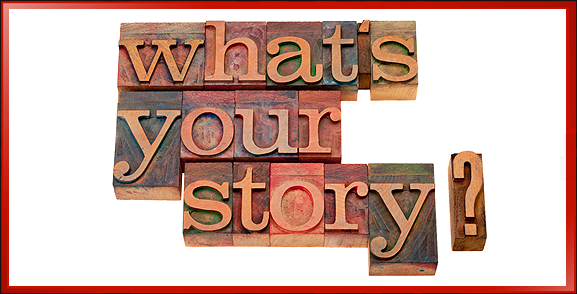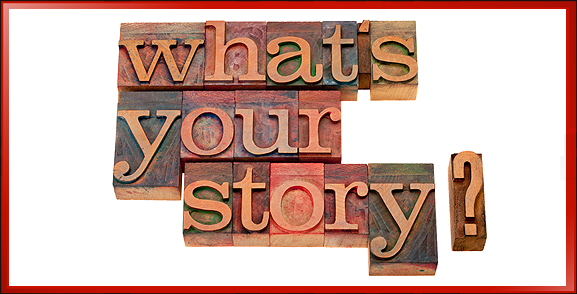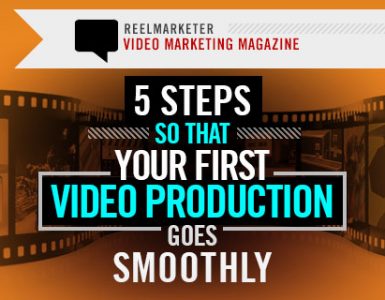In the wonderful world of explainer videos aka marketing videos aka demo videos or whatever you’d like to call them (we simply call them “gisteos”), it all starts with telling an engaging story.
Clients will often call us and begin the conversation by talking about how they’d like to execute their video. They send links to stuff they like, an art style that they insist on using, a cool video with funky music they want to mimic, etc. Don’t get me wrong, execution is indeed very important- but first and foremost, a great video begins with a compelling script.

It’s the message that makes or breaks these videos, not just stunning graphics, 3D characters, spinning logos or other elaborate forms of eye candy. Explanatory videos are not unlike the entertainment industry in this regard: have you ever been to a big-budget Hollywood movie that, despite its special effects wizardly and gazillion dollar budget, had a plot that made it almost unbearable to watch?
Exactly.
In my view, one could have a well-crafted story, executed modestly with even simple stick figure drawings and it could still be impactful and effective. Conversely, you could have a confusing, convoluted script brought to life by Pixar’s finest animators and people may still click off of it in a heartbeat.
So what are some elements of effective scriptwriting, applied to the world of marketing videos? Here are 5 key things to keep in mind:
1. Keep it Succinct
In the business world, they call it an “elevator pitch” for a reason, right? Don’t try to tell everyone everything about your revolutionary idea. Boil your story down to the essentials. As Shakespeare said, “brevity is the soul of wit,” and nowhere is this statement more applicable than in the development of effective explainer videos.
Communicate the “gist” (gist + video= Gisteo, get it?), not a “laundry list” of details that could dilute your message. Your video shouldn’t be a website’s worth of information stuffed in a convenient little video package. Give people a tasty appetizer, entice them… but don’t shove dinner down their throats. These videos should be part of an integrated marketing strategy- not a substitute for your homepage, FAQ’s, About Us, detailed “how it works” instructions, well-written sales copy etc.
Below is an example gisteo for a company called YouTours that, in under two minutes, manages to tell a fun story while speaking to two distinct targets.
2. Feel Their Pain
The role the antagonist and tension is key to novels, movies, plays and other genres of storytelling and it’s also critical in the world of marketing videos. Hopefully, your company, product or service exists because you’re making someone’s life better.
You’re solving a problem that you’ve identified in marketplace. You’re addressing the pain points experienced by your target or the tension created by competitive offerings or barriers which prevent your prospects from accomplishing something. It’s important to speak to this tension in your video. It will help show empathy, generate interest and set up the pay-off for the target in the form of your unique solution.
For instance, penny auctions site have grown in popularity over the past couple of years. These sites, however, aren’t without pain points for their users, as this gisteo for YouNeverLose.com points out:
3. Stress the “WIIFM” factor:
WIIFM, or “What’s In It For Me?” is a essential in explainer videos. You need to tell people what you can do for them, not just what you do. Sure, you need to present your solution in a clear, coherent way, but in doing so, you must go beyond simply stating why you’re great.
Ultimately, these videos should be about how you’re solving a person’s problem and making someone’s life better. The pain points discussed in #2 need to alleviated. WIIFM is the medicine that will conquer their pain, the hero that will vanquish those nasty, antagonistic road blocks that exist. Always underscore what’s in it for them and clearly articulate the end benefits they’ll receive from your offering.
Although the below gisteo may be a bit controversial for some females out there, the WIIFM factor for guys looking to find more dates online is brought to life here in no uncertain terms:
4. Humor Your Audience
This gisteo we did for the Boy Scouts of America opens with some over-the-top hyperbole to help make an important point to parents.
Unless you’ve got the incredible good fortune of having zero competitors, chances are you’re in a crowded sector and you need to cut through the clutter to connect with your audience.
People like humor.
They relax and focus and it creates a more comfortable environment, which makes your brand more approachable and friendly. Most audiences would prefer to be entertained rather than be bombarded by a hard-core, “in your face” sales pitch.
As a study from some years ago in the Journal of Marketing noted, “humor is more likely to enhance recall, evaluation, and purchase intention when the humorous message coincides with ad objectives, is well-integrated with those objectives, and is viewed as appropriate for the product category.”
It goes without saying, however, that the use of humor needs to be well-suited to your target because, if your customers don’t get the joke, then the joke is on you!
Incidentally, at Gisteo we certainly practice what we preach, not just in the work that we do for clients, but also in our very own gisteo promoting what Gisteo is all about. If I had the identify the reasons why Gisteo has been so successful since launching in May, 2011, this performance by our little square-headed dude would be right at the top of my list.
5. Tap Into Emotions
While humor can be highly effective, as discussed above, it’s obviously not your only creative resource. Don’t underestimate the power of human emotions. Appealing to your audience’s heart through memories, nostalgia, dreams and aspirations can leave people feeling all “warm and fuzzy” and more receptive to what you’re communicating. Emotion is a key driver behind purchasing decisions so, as AT&T used to say, don’t be afraid to go ahead and “reach out and touch someone” when appropriate.
This giseto for Intel above utilizes only moving text (called kinetic typography) and music to inspire viewers about an upcoming journey sponsored by the tech giant. Because it lacks voice over narration and relies solely on the power of words, I also think it’s a great example of how just impactful well-crafted stories can be!





